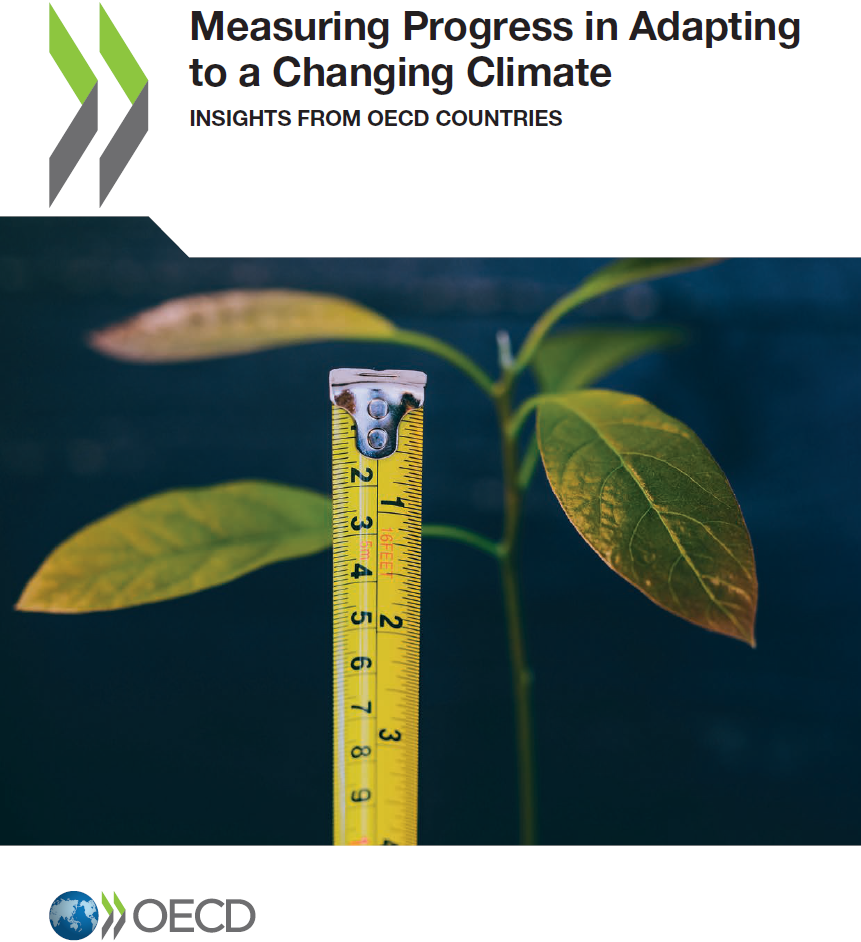📐 Methodology
This report builds off the observation of increasing climate impacts felt by countries around the world, and the rising number of national adaptation policies being adopted. In this context, demonstrating progress and results in the implementation of these policies is crucial, especially given that adaptation progress cannot be captured in a single metric and is highly context-dependent.
The OECD proposes an approach that evaluates adaptation at the national level, in a cross-cutting, across four steps that it lists :
- assessing climate risks as measurement baselines
- translating adaptatino needs into measurable objectives and targets
- tracking implementation progress towards achieving these targets
- measuring the effectiveness of adaptation policiese in reducing climate impacts over time
This report presents the results of an OECD-wide stocktake of countries’ efforts in measuring adaptation progress, based on a survey of OECD member and partner countries, and also delives into four country case studies: Chile, the Republic of Korea, the Slovak Republic and the United Kingdom. In doing so, it higlights the current state of play, and highlights existing data and information gaps that need to be bridged, while also making recommendations on foromulating clearer objectives, using indicators to assess progress, allocating sufficient resources and ensuring a conducive institutional framework for adaptation that engages with all the concerned stakeholders.
🔎 Key Takeaways
- Climate hazard and exposure information is becoming widely available thanks to increasingly regular assessments (60% of surveyed countries). Nevertheless, only 40% assess the exposure of people, socio-economic assets and ecosystems to climate impacts. Coverage, methodologies used and depth of reported vulnerability assessments vary greatly.
- Adaptation objectives are increasingly well-defined, with 97% of countries reporting that their climate risk data informs the development of national policy objectives. 67% of countries use climate risk data to define sub-national targets as well, and 73% define targets by sector.
- 70% of all surveyed countries track implementation progress through inputs allocated to adaptation as well as outputs produced.
- Measuring adapation effectiveness remains the greatest challenge, reported by 80% of countries. This is in part due to partially-reported observations of climat impacts, as well as the difficulty in estabilshing links between adaptation actions and the resulting change in climate impacts. Many countries rely on qualitative assessments in the absence of quantitative attribution frameworks to measure success or failure of adaptation policies.
- Data requirements are significant, going from hazard modelling and climate projections, to population, household and administrative data. Countries are working on combining longitudinal and spatial data from across sectors and levels of government, and stronger communiaction between data owners and policymakers can go a long way in better using already-available data.
- 83% of surveyed countries are using or planning to use indicators to measure adaptation progress, to simplify, synthesise and standardise information.


